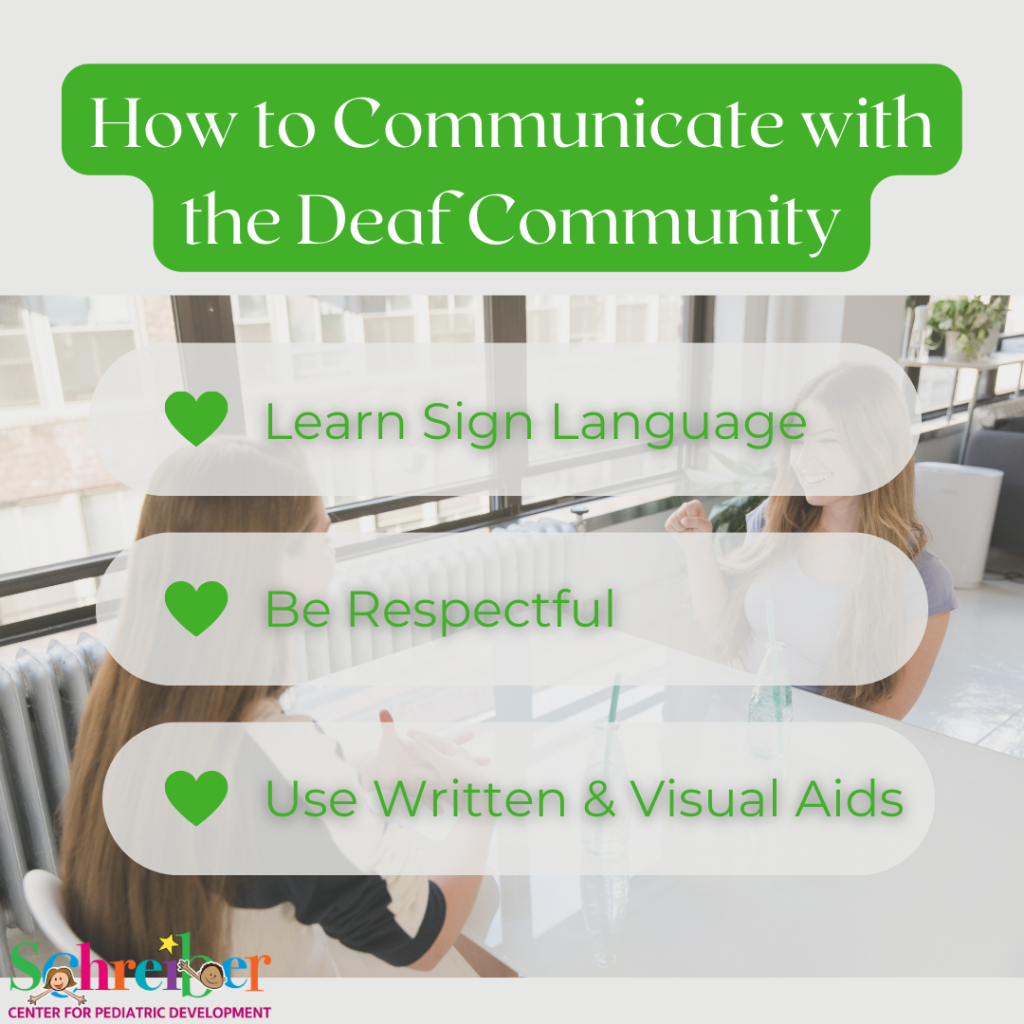Tag: engaging with the Deaf
How to Communicate with the Deaf Community
September 18, 2023In a world that strives for diversity and inclusivity, it’s essential to recognize and celebrate different cultures and communities. Today marks the beginning of the International Week of the Deaf, a time dedicated to fostering understanding and connection with the Deaf community. This presents a wonderful opportunity to delve into the realm of inclusivity and explore some invaluable tips for engaging meaningfully with people who are Deaf.
Discovering the World of Sign Language
Taking the time to learn a few basic American Sign Language (ASL) signs and gestures is one of the most meaningful steps you can take to embrace inclusivity and engage with the Deaf community. You may think that learning an entirely new language sounds daunting, but taking the time to master even a few fundamental signs can go a long way in bridging the communication gap between the hearing and the Deaf.
Eye Contact, Facial Expressions, and Personal Space
Maintaining consistent eye contact when communicating with anyone is respectful, but especially important in conversations with people who are Deaf. When Deaf people talk to each other they are most often maintaining eye contact. While a hearing person may only see hands forming ASL signs, when it comes to communicating using ASL facial expressions convey tone, emotion, and context. Because facial expressions play a crucial role in sign language, it is important to make sure that when you are communicating with a person who is Deaf your face is well lit and able to be seen easily. As a visual language ASL also requires additional personal space, and maintaining that space shows both consideration and respect, promoting a welcoming atmosphere that encourages open communication.
When to Write it Out & Use Visual Aids
If you find yourself in a situation where complex information needs to be shared, and you are not fluent in ASL, it can be useful to use a pen and paper, or electronic notes device to communicate instead. Using visual aids is a great way to enhance communication with a person, or people, who are deaf, especially in group settings. Utilizing tools like presentations or written materials ensures that everyone in the group is on the same page.
Eliminating the barriers of misunderstanding and allowing for accurate exchange of information is important but remember that while this approach is practical and ensures seamless information sharing it can be alienating as it removes human emotion from the conversation. Learning basic ASL and using it before resorting to writing out your message can help maintain connection during the conversation.
Commit to Inclusivity Everyday
By taking steps to learn and use basic American Sign Language (ASL) signs, respecting the significance of eye contact, facial expressions, and personal space, and incorporating written communication and visual aids when needed, we can dismantle communication barriers between the hearing and Deaf communities. When we commit to inclusivity everyday, we can create meaningful interactions and change the world for the better. We challenge you to take these tips to heart and share them with your family and friends.
If you child is Deaf and you are interested in learning more about how Schreiber’s Pediatric Therapies can help your child visit: http://www.schreiberpediatric.org/therapy-services/
As a nationally recognized pediatric facility, the Schreiber Center for Pediatric Development provides family-centered education and therapy programs for infants, children and adolescents with disabilities, developmental delays, and acquired injuries. Our goal-oriented approach maximizes each child’s ability to function independently within the community.
